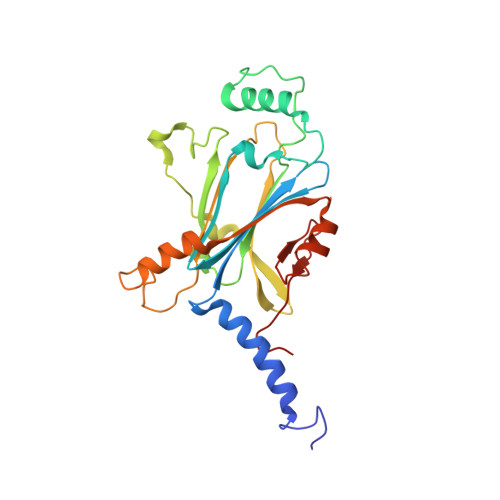A pipeline for structure determination of in vivo-grown crystals using in cellulo diffraction.
Boudes, M., Garriga, D., Fryga, A., Caradoc-Davies, T., Coulibaly, F.(2016) Acta Crystallogr D Struct Biol 72: 576-585
- PubMed: 27050136
- DOI: https://doi.org/10.1107/S2059798316002369
- Primary Citation of Related Structures:
5EXY, 5EXZ - PubMed Abstract:
While structure determination from micrometre-sized crystals used to represent a challenge, serial X-ray crystallography on microfocus beamlines at synchrotron and free-electron laser facilities greatly facilitates this process today for microcrystals and nanocrystals. In addition to typical microcrystals of purified recombinant protein, these advances have enabled the analysis of microcrystals produced inside living cells. Here, a pipeline where crystals are grown in insect cells, sorted by flow cytometry and directly analysed by X-ray diffraction is presented and applied to in vivo-grown crystals of the recombinant CPV1 polyhedrin. When compared with the analysis of purified crystals, in cellulo diffraction produces data of better quality and a gain of ∼0.35 Å in resolution for comparable beamtime usage. Importantly, crystals within cells are readily derivatized with gold and iodine compounds through the cellular membrane. Using the multiple isomorphous replacement method, a near-complete model was autobuilt from 2.7 Å resolution data. Thus, in favourable cases, an in cellulo pipeline can replace the complete workflow of structure determination without compromising the quality of the resulting model. In addition to its efficiency, this approach maintains the protein in a cellular context throughout the analysis, which reduces the risk of disrupting transient or labile interactions in protein-protein or protein-ligand complexes.
Organizational Affiliation:
Infection and Immunity Program, Monash Biomedicine Discovery Institute and Department of Biochemistry and Molecular Biology, Monash University, Melbourne, VIC 3800, Australia.



















